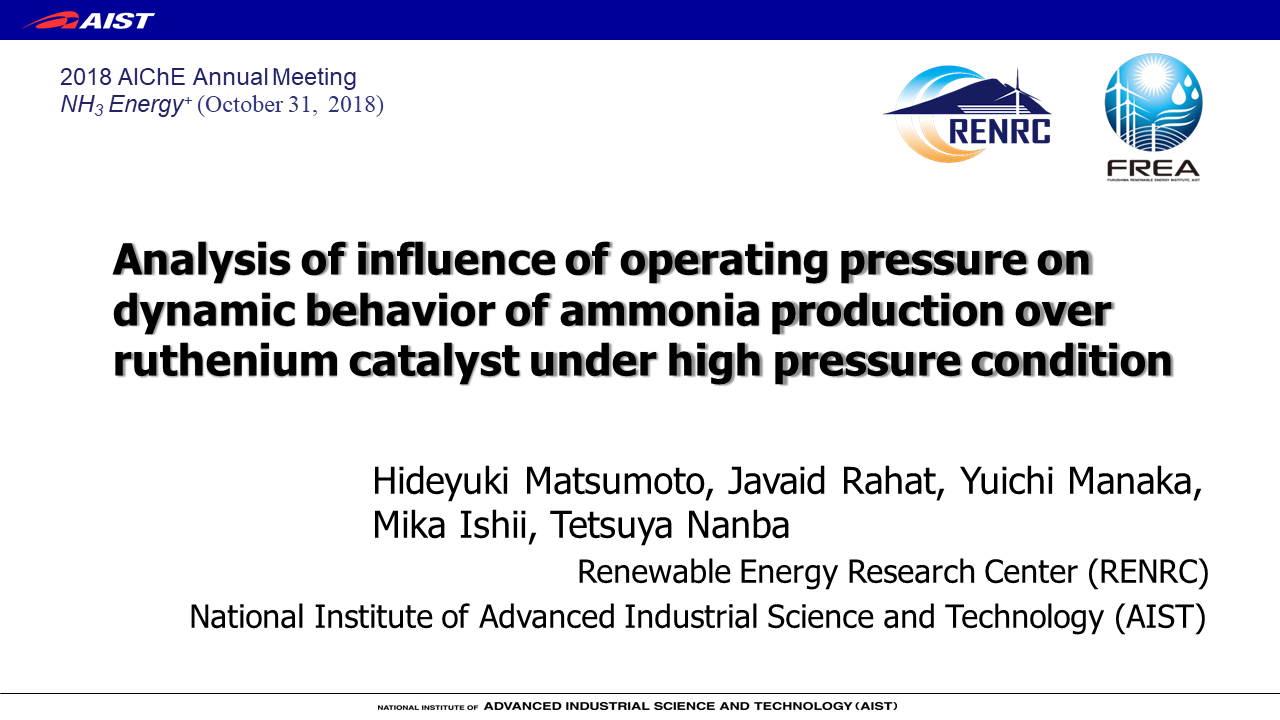Presentation
Synthesis and Assessment of Process Systems for Production of Ammonia Using Nitric Oxide in Combustion Exhaust Gas
Recently, ammonia is regarded as an alternative fuel without carbon dioxide (CO2). Numerous studies have been performed using ammonia as a fuel. Iki and Kurata confirmed the working of a prototype for the ammonia gas turbine, where ammonia burned in an environmentally benign way to generate electricity, exhausting only water and nitrogen [1]. From the view of cycle of ammonia for the development of a society with low carbon, it is required to synthesize carbon-free ammonia (green ammonia) in small plants. This green ammonia can be synthesized using renewable energy, with hydrogen from electrolysis of water and nitrogen from pressure…





